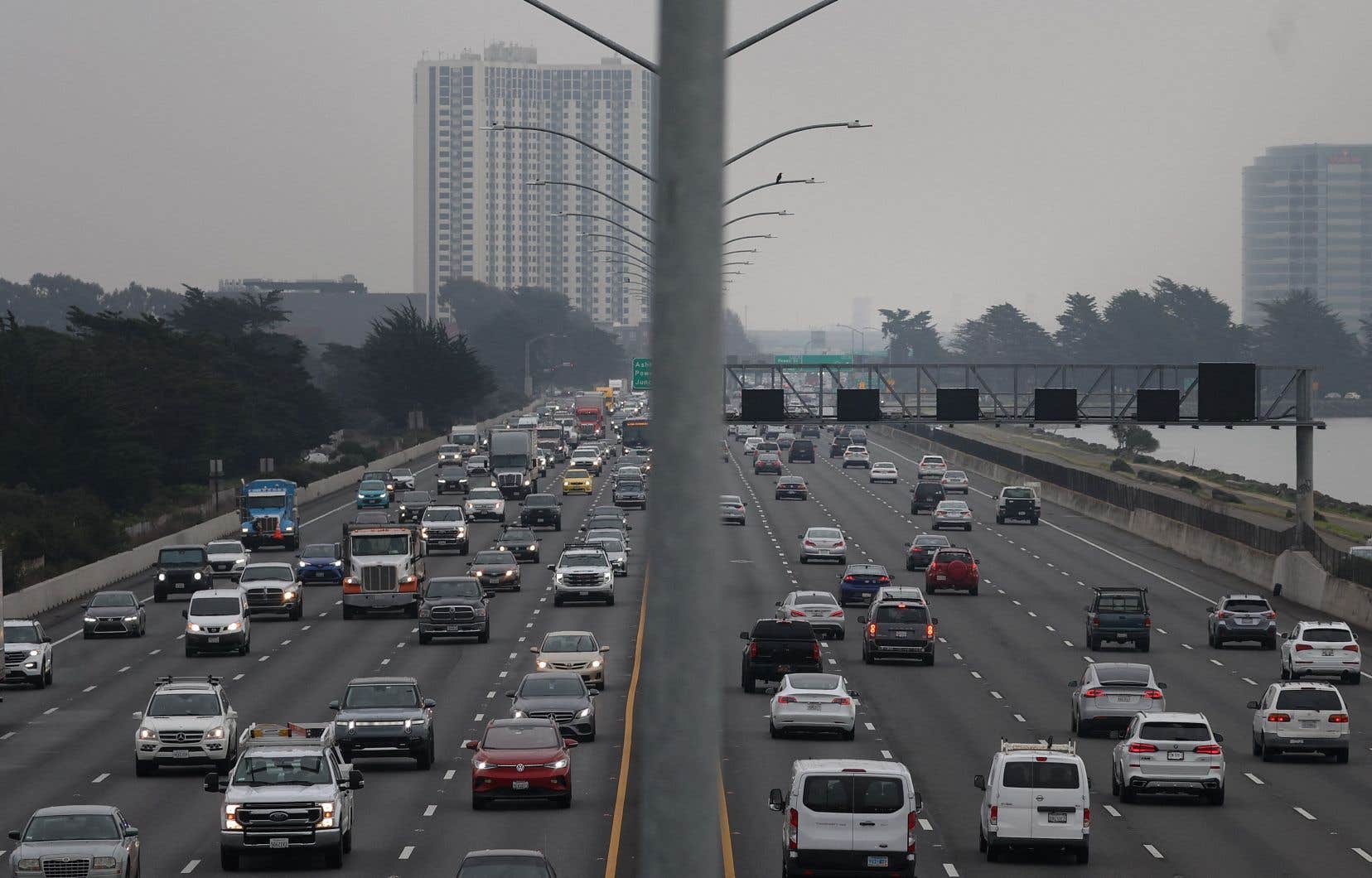The US government announced on Wednesday that it had finalized new standards on polluting emissions from automobiles, described as the strictest ever adopted, and aimed at accelerating the transition to electric cars.
Compared to the draft regulations announced last year, which has since been the subject of a public consultation, these final standards however give more time and flexibility to manufacturers to achieve the new CO emissions targets.2.
In the midst of an election year, President Joe Biden needs the support of the auto industry and its employees. But it must also convince on its climate promises.
“These strictest pollution standards ever for cars reinforce America’s leadership in building a clean transportation future,” Michael Regan, head of the state protection agency, said in a statement. environment (EPA).
The new standards concern light and medium vehicles built from 2027 until 2032.
The administration does not set a precise quota of clean vehicles for sale, but gradually restricts the average emissions authorized per year for new vehicles produced by each manufacturer.
The threshold limit was relaxed for the first years (2027-2030), but ends in 2032 at the same level as previously envisaged.
On this date, CO emissions standards2 will represent a reduction of about 50% compared to the standards for 2026 cars, argues the EPA.
The idea was to give manufacturers “more time” to adapt initially, a senior US official told reporters.
But some environmental advocates accused the government of giving in to pressure from industry.
The new standards “require fewer emissions reductions in the first years” compared to the initial proposal, regretted the Center for Biological Diversity. “This will send carbon pollution into the atmosphere sooner, and do more damage to the climate. »
The Natural Resources Defense Council, another environmental association, estimated that the measures were going “in the right direction”.
Primary source of emissions
Transportation is currently the country’s largest source of greenhouse gas emissions.
The new standards should make it possible to avoid the emission of 7.2 billion tonnes of CO2 by 2055, according to the EPA. This is approximately four times the emissions of the entire transport sector in 2021.
The new regulations also affect emissions of fine particles, which are dangerous for health.
In total, it must provide a net profit of 99 billion dollars per year, according to the government, including 13 billion thanks to health savings (avoided hospitalizations, etc.).
According to the EPA, these new standards should help accelerate the transition to zero-emission (electric) or low-emission (plug-in hybrid) vehicles.
Concretely, it will be up to manufacturers to choose which technologies they adopt to reduce their emissions. They could also improve the efficiency of gasoline car engines, for example.
But to the extent that many manufacturers are now well engaged in electrification, the agency is counting on an acceleration of the movement.
“Since 2021, sales of electric vehicles have quadrupled, and prices continue to fall,” argued Ali Zaidi, Joe Biden’s climate advisor. “We are moving faster and faster to confront the climate crisis,” he assured.
Since the start of Joe Biden’s mandate, who has also committed to developing the network of charging stations, companies have announced more than $160 billion in investments in the construction of clean vehicles, according to the EPA.
According to the agency’s calculations, by the 2030s, sales of electric vehicles could represent up to 56% of light vehicles (city cars, sedans, SUVs, pick-ups, etc.).
That’s lower than the 67% envisioned last year, with the EPA now identifying more growth for plug-in hybrids to meet emissions targets.
In 2023, electric cars still represented only around 7.6% of vehicles sold in the United States, according to Cox Automotive.
The slope therefore remains steep for manufacturers, who welcomed the extension of deadlines decided by the EPA: it was “the right choice to make, because it gives priority to more reasonable electrification objectives”, commented John Bozzella of the Alliance for Automotive Innovation.
